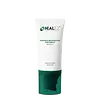What's inside
What's inside
 Key Ingredients
Key Ingredients

 Benefits
Benefits

 Concerns
Concerns

 Ingredients Side-by-side
Ingredients Side-by-side

Dibutyl Adipate
EmollientTriethylhexanoin
MaskingZinc Oxide
Cosmetic ColorantCaprylic Acid
CleansingPhenylbenzimidazole Sulfonic Acid
UV AbsorberGlycerin
HumectantDiethylamino Hydroxybenzoyl Hexyl Benzoate
UV FilterDiethylhexyl Butamido Triazone
UV AbsorberMethylene Bis-Benzotriazolyl Tetramethylbutylphenol
UV FilterTriethanolamine
BufferingDisteardimonium Hectorite
StabilisingInositol
HumectantTocopheryl Acetate
AntioxidantAvena Sativa Seed Extract
Skin ConditioningBisabolol
MaskingPropylene Carbonate
SolventCamellia Sinensis Leaf Extract
AntimicrobialPhenoxyethanol
PreservativeCellulose
AbsorbentDecyl Glucoside
CleansingPropylene Glycol
HumectantXanthan Gum
EmulsifyingEthylhexylglycerin
Skin ConditioningDibutyl Adipate, Triethylhexanoin, Zinc Oxide, Caprylic Acid, Phenylbenzimidazole Sulfonic Acid, Glycerin, Diethylamino Hydroxybenzoyl Hexyl Benzoate, Diethylhexyl Butamido Triazone, Methylene Bis-Benzotriazolyl Tetramethylbutylphenol, Triethanolamine, Disteardimonium Hectorite, Inositol, Tocopheryl Acetate, Avena Sativa Seed Extract, Bisabolol, Propylene Carbonate, Camellia Sinensis Leaf Extract, Phenoxyethanol, Cellulose, Decyl Glucoside, Propylene Glycol, Xanthan Gum, Ethylhexylglycerin
Water
Skin ConditioningGlycerin
HumectantCoco-Caprylate/Caprate
EmollientSodium Acrylates Copolymer
Butyl Methoxydibenzoylmethane
UV AbsorberEthylhexyl Methoxycinnamate
UV AbsorberPolymethylsilsesquioxane
Phenyl Methicone
EmollientHyaluronic Acid
HumectantTetrasodium EDTA
Allantoin
Skin ConditioningLecithin
EmollientOctocrylene
UV AbsorberPhospholipids
Skin ConditioningButylene Glycol
HumectantIsononyl Isononanoate
EmollientCaprylic/Capric Triglyceride
MaskingHydrogenated Lecithin
EmulsifyingCholesterol
EmollientBisabolol
MaskingSilanetriol
Tocopheryl Acetate
AntioxidantHydrogenated Polydecene
EmollientHydroxystearic Acid
CleansingSodium Polyacryloyldimethyl Taurate
Emulsion StabilisingTrideceth-10
CleansingCyclopentasiloxane
EmollientDimethicone/Vinyl Dimethicone Crosspolymer
Skin ConditioningPentylene Glycol
Skin Conditioning1,2-Hexanediol
Skin ConditioningPropylene Glycol
HumectantPhenoxyethanol
PreservativeSodium Benzoate
MaskingParfum
MaskingEthylhexylglycerin
Skin ConditioningTrehalose
HumectantCentella Asiatica Extract
CleansingHoney Extract
HumectantOphiopogon Japonicus Root Extract
Skin ConditioningOpuntia Ficus-Indica Stem Extract
Skin ConditioningHelianthus Annuus Sprout Extract
Skin ConditioningCaesalpinia Spinosa Fruit Pod Extract
Sophora Flavescens Root Extract
AntioxidantWater, Glycerin, Coco-Caprylate/Caprate, Sodium Acrylates Copolymer, Butyl Methoxydibenzoylmethane, Ethylhexyl Methoxycinnamate, Polymethylsilsesquioxane, Phenyl Methicone, Hyaluronic Acid, Tetrasodium EDTA, Allantoin, Lecithin, Octocrylene, Phospholipids, Butylene Glycol, Isononyl Isononanoate, Caprylic/Capric Triglyceride, Hydrogenated Lecithin, Cholesterol, Bisabolol, Silanetriol, Tocopheryl Acetate, Hydrogenated Polydecene, Hydroxystearic Acid, Sodium Polyacryloyldimethyl Taurate, Trideceth-10, Cyclopentasiloxane, Dimethicone/Vinyl Dimethicone Crosspolymer, Pentylene Glycol, 1,2-Hexanediol, Propylene Glycol, Phenoxyethanol, Sodium Benzoate, Parfum, Ethylhexylglycerin, Trehalose, Centella Asiatica Extract, Honey Extract, Ophiopogon Japonicus Root Extract, Opuntia Ficus-Indica Stem Extract, Helianthus Annuus Sprout Extract, Caesalpinia Spinosa Fruit Pod Extract, Sophora Flavescens Root Extract
 Reviews
Reviews

Ingredients Explained
These ingredients are found in both products.
Ingredients higher up in an ingredient list are typically present in a larger amount.
Bisabolol is famous for its skin soothing properties. It does this by blocking inflammatory signals, helping to reduce your body's reaction to irritation.
This ingredient also interferes with the process of hyperpigmentation. This can help with reducing dark spots and uneven tone.
Bisabolol is an antioxidant. Antioxidants help fight free-radicals. Free-radicals are molecules that may damage your skin cells. By fighting these free-radicals, Bisabolol may slow down signs of aging.
Studies have shown Bisabolol to have antimicrobial properties and may be a fungicide. These properties help preserve a product's shelf life.
All these properties makes bisabolol a great skin barrier helper ingredient.
Bisabolol also helps the absorption of other ingredients.
Note: Synthetic Bisabolol has been shown to be less effective.
Learn more about BisabololEthylhexylglycerin (we can't pronounce this either) is commonly used as a preservative and skin softener. It is derived from glyceryl.
You might see Ethylhexylglycerin often paired with other preservatives such as phenoxyethanol. Ethylhexylglycerin has been found to increase the effectiveness of these other preservatives.
Glycerin is already naturally found in your skin. It helps moisturize and protect your skin.
A study from 2016 found glycerin to be more effective as a humectant than AHAs and hyaluronic acid.
As a humectant, it helps the skin stay hydrated by pulling moisture to your skin. The low molecular weight of glycerin allows it to pull moisture into the deeper layers of your skin.
Hydrated skin improves your skin barrier; Your skin barrier helps protect against irritants and bacteria.
Glycerin has also been found to have antimicrobial and antiviral properties. Due to these properties, glycerin is often used in wound and burn treatments.
In cosmetics, glycerin is usually derived from plants such as soybean or palm. However, it can also be sourced from animals, such as tallow or animal fat.
This ingredient is organic, colorless, odorless, and non-toxic.
Glycerin is the name for this ingredient in American English. British English uses Glycerol/Glycerine.
Learn more about GlycerinPhenoxyethanol is a preservative that has germicide, antimicrobial, and aromatic properties. Studies show that phenoxyethanol can prevent microbial growth. By itself, it has a scent that is similar to that of a rose.
It's often used in formulations along with Caprylyl Glycol to preserve the shelf life of products.
Propylene Glycol is an odorless, colorless liquid. As a humectant, it helps skin retain moisture. It also aids in delivering active ingredients.
Another role of this ingredient is preventing a product from melting or freezing. Propylene glycol also adds antimicrobrial properties to a product, elongating product lifespan.
This ingredient is considered an organic alcohol and commonly added into both cosmetics and foods.
Those with sensitive skin or conditions may develop a rash when using this ingredient.
Learn more about Propylene GlycolTocopheryl Acetate is AKA Vitamin E. It is an antioxidant and protects your skin from free radicals. Free radicals damage the skin by breaking down collagen.
One study found using Tocopheryl Acetate with Vitamin C decreased the number of sunburned cells.
Tocopheryl Acetate is commonly found in both skincare and dietary supplements.
Learn more about Tocopheryl Acetate